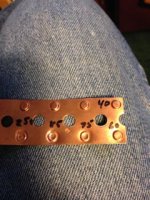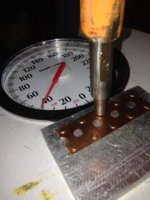snath
100 W
I wanted a pack that would enable me to remove individual cells. To accomplish this, I built a case of 3/16" PVC sheet for the covers, 1/4" sheet for the sides, and 1/4" dia rod. for a series of spacers for the interior. I used a height gage to lay out a grid for (ultimately) 122 screws that position the cells and hold the case together. I made a die to create a series of dimples on copper strip for bus bars. And, I used a "compression blanket" of high density urethane foam to ensure constant pressure on the bus bar/cell/ bus bar sandwich.
A few pictures to show how this all works:

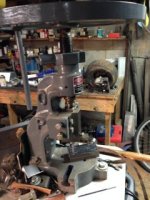

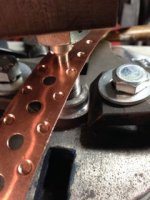

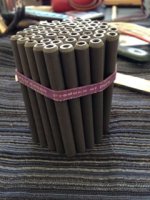
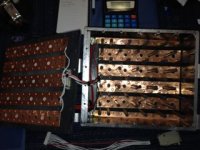
 View attachment 2View attachment 1
View attachment 2View attachment 1
A few pictures to show how this all works:







 View attachment 2View attachment 1
View attachment 2View attachment 1

